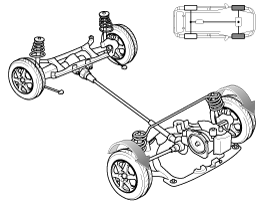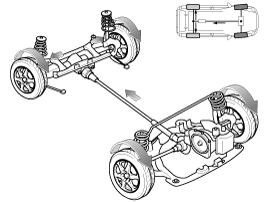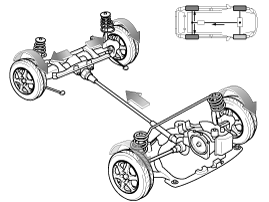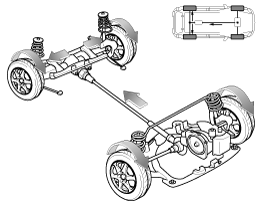 Hyundai Santa Fe: Direct Electro Hydraulic Actuator Coupling. Description and Operation
Hyundai Santa Fe: Direct Electro Hydraulic Actuator Coupling. Description and Operation
Description
| 1. |
AUTO MODE:
|
| 2. |
LOCK MODE:
|
| 1. |
Cruising (Auto Mode)
- Power is delivered mostly to the front wheels.
|
| 2. |
Cornering (Auto Mode)
- Adjusts the amount of power to the rear wheels based on the
turning radius and cornering speed.
|
| 3. |
Wheel Slip (Auto Mode)
- If one or both of the front wheels lose traction, the system
transfers an appropriate amount of power to the rear wheels based on
the slip amount at the front wheels.
|
| 4. |
Lock Mode
- Maximizes rough terrain performance (active only at speeds below
40 km/h).
|
Operation
| Electronic Coupling |
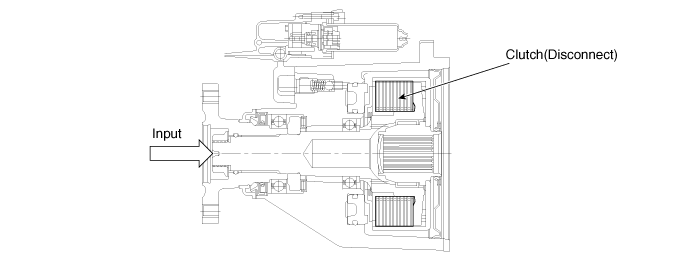
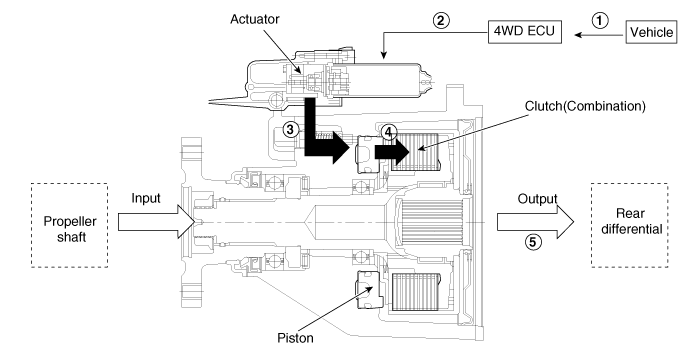
Operation Order
|
 Direct Electro Hydraulic Actuator Coupling. Components and Components Location
Direct Electro Hydraulic Actuator Coupling. Components and Components Location
Component Location 1. Coupling assembly 2. Propeller shaft 3. Transfer assembly Components 1. Coupling assembly 2. Input shaft 3. Pressure sensor 4. Extension wiring 5. Oil hydraulic Motor(Actuator) ...
 Direct Electro Hydraulic Actuator Coupling. Repair procedures
Direct Electro Hydraulic Actuator Coupling. Repair procedures
Inspection All units are filled up with coupling fluid (ultra-low viscosity ATF) prior to shipping. Inspection, fill-up, and replacement of coupling fluid is therefore not necessary (zero maintenance, ...
See also:
Parking on hills
Generally, if you have a trailer attached to your vehicle, you should not park your vehicle on a hill. People can be seriously or fatally injured, and both your vehicle and the trailer can be damaged if ...
General Service Information
General Service Information Protection Of The Vehicle Always be sure to cover fenders, seats, and floor areas before starting work. The support rod must be inserted into the hole near the edge of the hood ...
Illuminated engine start/stop button
Whenever the front door is opened, the engine start/stop button will illuminate for your convenience. The light will go off after about 30 seconds when the door is closed. It will also go off immediately ...

